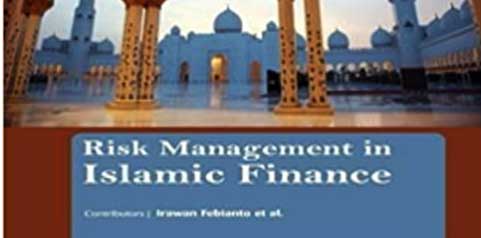Financial Stability and Risk Management in Islamic Financial Institutions


While various reports suggest slightly different figures on the size of the Islamic finance industry as a whole, it is believed that the industry witnessed consistent rises in assets over several years. The assets climbed from US$1.2 trillion in 2012 to US$ 2.4 trillion in 2020. Such data is based on disclosed assets by all Islamic finance institutions (fully Shariah compliant as well as those with Sharia windows) covering commercial banking, funds, Sukuk, Takaful, and other segments.
Financial stability refers to the stability of the overall financial sector as well as stability of individual financial institutions. As far as the overall financial stability of Islamic financial sector is concerned, its theoretical model is based on risk sharing at multiple levels points towards greater stability and resilience. However, in practice, the predominance of fixed obligation type contracts such as murabaha and ijarah somewhat reduce the element of risk-sharing but do not eliminate it. The concern for stability of the Islamic financial sector has increased not because of this as such, but because of the fact that even within the fixed obligation type of contracts the industry is increasingly resorting to tawarruq, two sided murabaha, and commodity murabaha (almost all close to leasing). These arrangements eliminate any trace of risk sharing and bring the Islamic financial sector at par with the conventional finance even more prone to instability due to the non-existence of the support infrastructure that is available to conventional finance.
Banks are meant to get deposits from customers and to do financing to the government, corporates and individuals on some markup but Islamic Banks are different in nature as they cannot take interest, and each transaction is based on some underlying assets and cannot invest in prohibited areas. They almost get their deposits on mudarbah basis meaning to act on behalf of their customers and to pay mark up on profit and loss basis.
Hence both conventional and Islamic banks have to face certain risks like credit risk, markets risks of various kinds. For this internationally Central Banking institution based in Basle (Switzerland) plays its role in formulating structure and method to counter these risks. So every country in the world has to follow Basle 1, Basle 2 and so forth arrangements. But in case of Islamic banks they have to do it with lot of documentation. Further at the moment the Islamic banking sector has become heavily tilted to very short-term financing, even more than its conventional counterpart, adding an element of vulnerability to shocks.
The only lines of defense the industry so far has are its higher liquidity and avoidance of large-scale use of derivatives in its portfolio. These two elements helped the Islamic financial sector ride out relatively safely through the global financial crisis in the past but the changing liquidity situation does not guarantee the protection of this capability in future. Given the small size of the Islamic financial sector, it is also prone to the repercussions caused by problems in the conventional financial sector. For example, the tapering off of the quantitative easing of monetary policy by the US Federal Reserve or other central banks like SBP results in withdrawal of funds from emerging Risk management levels at the level of Islamic banks and financial institutions.
Despite the issuance of many regulatory standards by the IFSB covering the capital adequacy, liquidity risk management, and market risk, etc.,the missing part remains the guidelines on how to operationalize those standards. This can form an area of research and guidance. Though many of the risks faced by the Islamic banks and financial institutions are similar in nature as faced by the conventional banks and financial institutions, but modification may be needed in identification and measurement of those risks. This is due to the fact that a contract as simple as murabaha passes through various stages of promise, purchase on behalf of the bank, and the final sale on credit.
During the transition of each stage risk transformation and transition also takes place. Moreover, notwithstanding the commonalities, the risk mitigation techniques can be quite different between conventional and Islamic financial institutions. A survey of risk perception and risk management of Islamic financial institutions conducted jointly by IRTI and GARP revealed that bankers and regulators perceive credit risk management as a more important aspect, on which guidance and techniques are urgently needed. This was followed by importance of operational risk and liquidity risk management respectively. Several important issues in risk management for Islamic banks and financial institutions deserve immediate attention both by the academics and practitioners.

